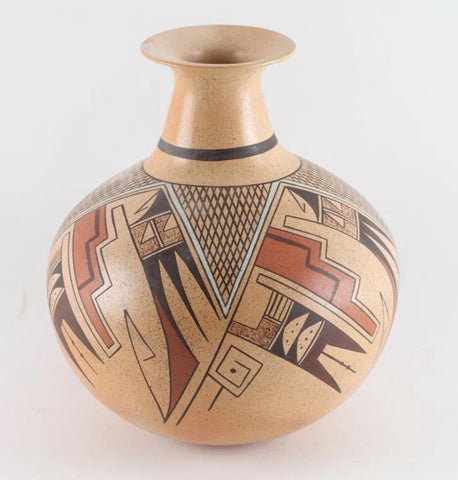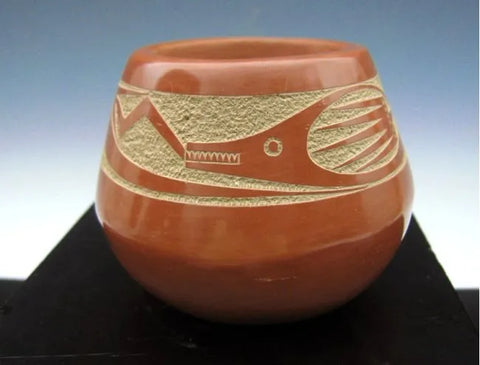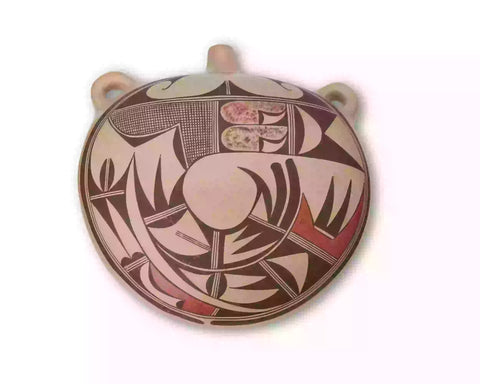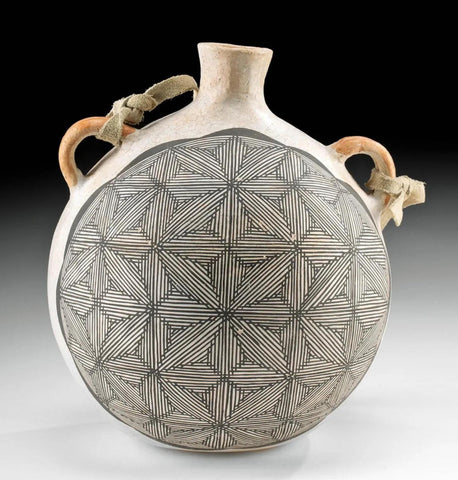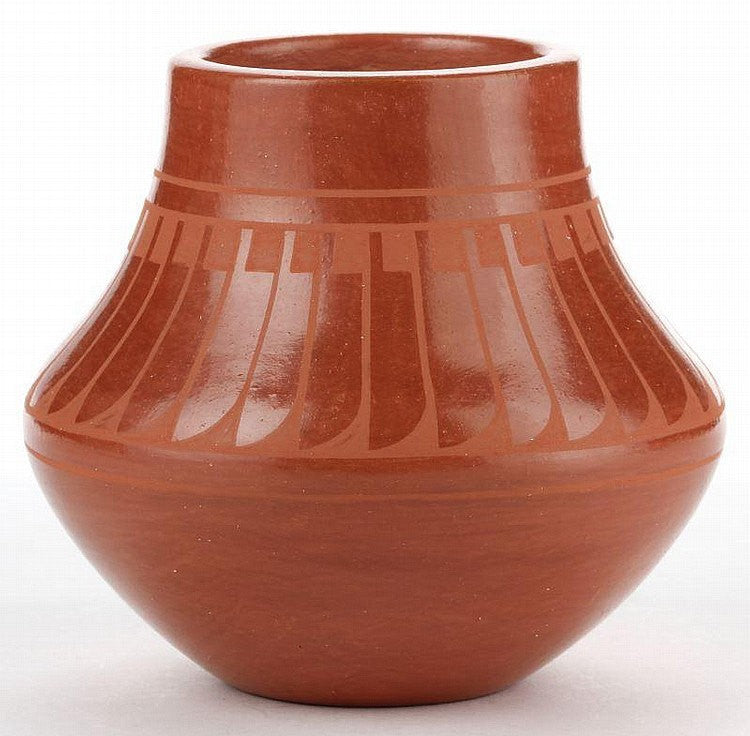
Redware Pottery : San Ildelfonso, Alice and Ruben Redware Jar #207 Sold
$ 300.00
Redware Pottery
Description: San Ildefonso, Alice & Ruben, Redware Jar wide shoulder jar with feather design to neck and shoulder, signed "Alice & Ruben Martinez, San Ildefonso, Pueblo." 4 3/8 in. tall. Very good condition.
Alice Martinez and her son, Ruben have formed a partnership with pottery making. They are from the Pueblo of San Ildefonso/Tewa.
Alice is now in her seventies, and has been making pottery since she was twenty years old. Alice was inspired to continue the long lived tradition of hand coiling pottery from her parents, Richard and Lucy Martinez.
Ruben learned the fundamentals of pottery making from his mother and now they have joined forces and combined their efforts to make some of the finest black on black pottery available today.
Over the last fifty years, Alice and Ruben have perfected the Tunyo Polychrome mate on polished black style pottery that the Martinez family from San Ildefonso had become famous for back in the early 1900's.
They make pottery the traditional way; they gather the clay from sacred grounds within the San Ildefonso Pueblo, clean the clay,hand coil, shape, and fire the traditional way, outdoors, with horse manure.
Alice‰۪s father, Richard Martinez was the adopted son of the famous Maria Martinez.
Awards:
-Eight Northern Pueblos Exhibit
-Pueblo Indian Pottery 750 Artist Biographies
Pueblo pottery is made using a coiled technique that came into northern Arizona and New Mexico from the south, some 1500 years ago. In the four-corners region of the US, nineteen pueblos and villages have historically produced pottery. Although each of these pueblos use similar traditional methods of coiling, shaping, finishing and firing, the pottery from each is distinctive. Various clay's gathered from each pueblo's local sources produce pottery colors that range from buff to earthy yellows, oranges, and reds, as well as black. Fired pots are sometimes left plain and other times decorated most frequently with paint and occasionally with appliqu̩. Painted designs vary from pueblo to pueblo, yet share an ancient iconography based on abstract representations of clouds, rain, feathers, birds, plants, animals and other natural world features.
Tempering materials and paints, also from natural sources, contribute further to the distinctiveness of each pueblo's pottery. Some paints are derived from plants, others from minerals. Before firing, potters in some pueblos apply a light colored slip to their pottery, which creates a bright background for painted designs or simply a lighter color plain ware vessel. Designs are painted on before firing, traditionally with a brush fashioned from yucca fiber.
Different combinations of paint color, clay color, and slips are characteristic of different pueblos. Among them are black on cream, black on buff, black on red, dark brown and dark red on white (as found in Zuni pottery), matte red on red, and polychrome a number of natural colors on one vessel (most typically associated with Hopi). Pueblo potters also produce undecorated polished black ware, black on black ware, and carved red and carved black wares.
Making pueblo pottery is a time-consuming effort that includes gathering and preparing the clay, building and shaping the coiled pot, gathering plants to make the colored dyes, constructing yucca brushes, and, often, making a clay slip. While some Pueblo artists fire in kilns, most still fire in the traditional way in an outside fire pit, covering their vessels with large potsherds and dried sheep dung. Pottery is left to bake for many hours, producing a high-fired result.
Today, Pueblo potters continue to honor this centuries-old tradition of hand-coiled pottery production, yet value the need for contemporary artistic expression as well. They continue to improve their style, methods and designs, often combining traditional and contemporary techniques to create striking new works of art. (Source: Museum of Northern Arizona)
Pottery

